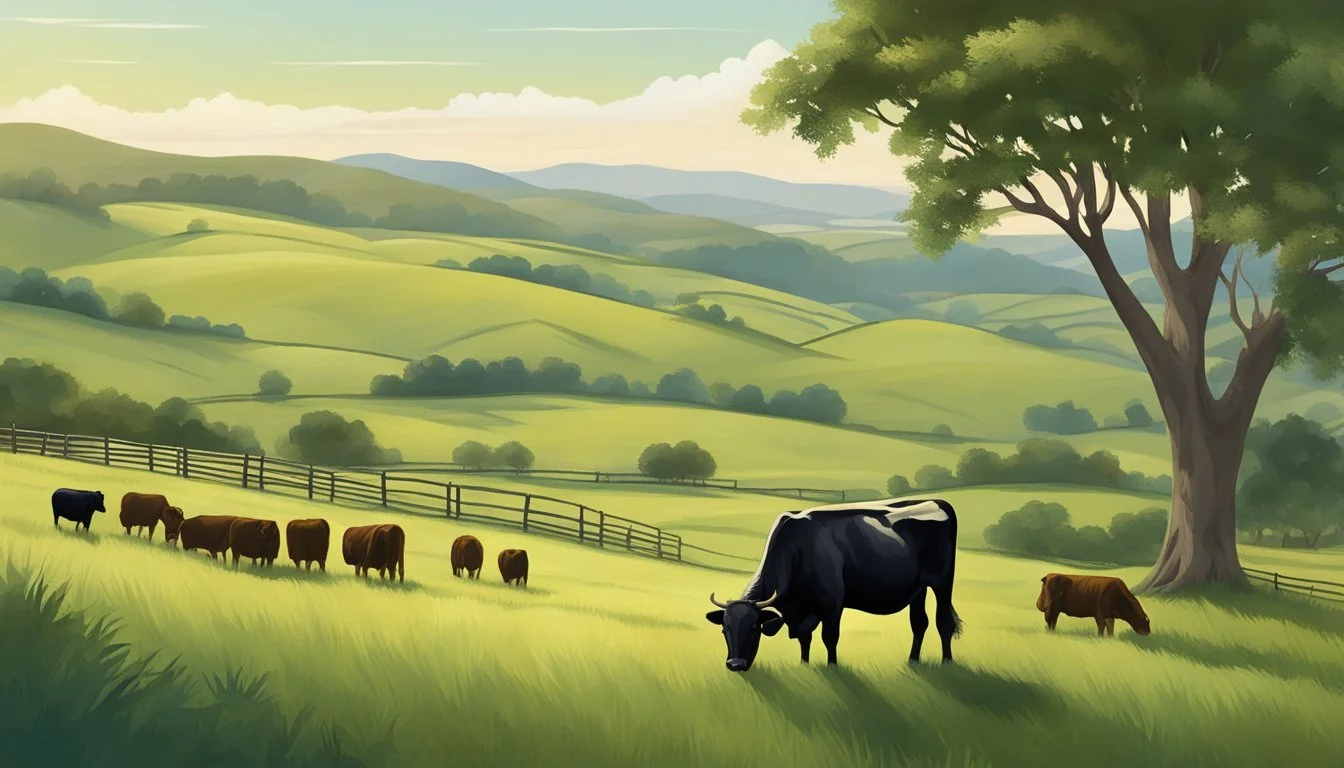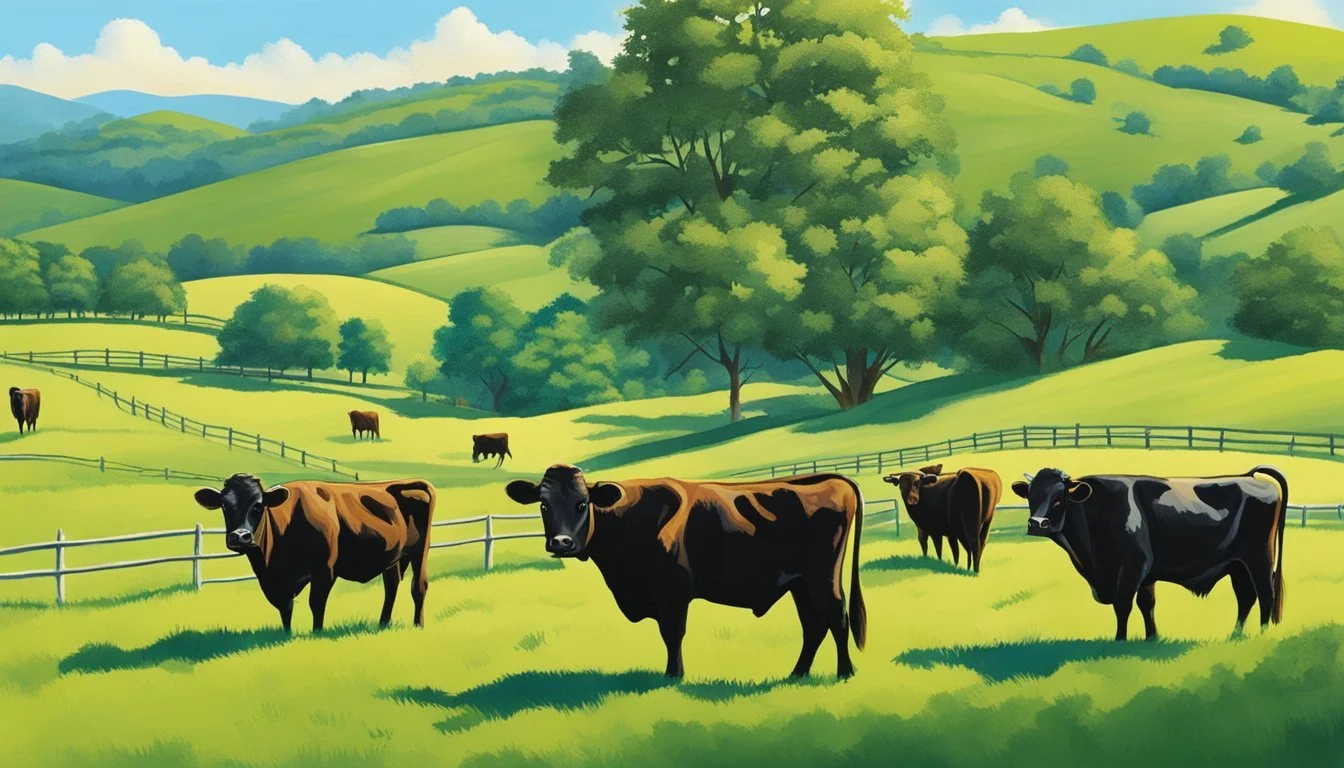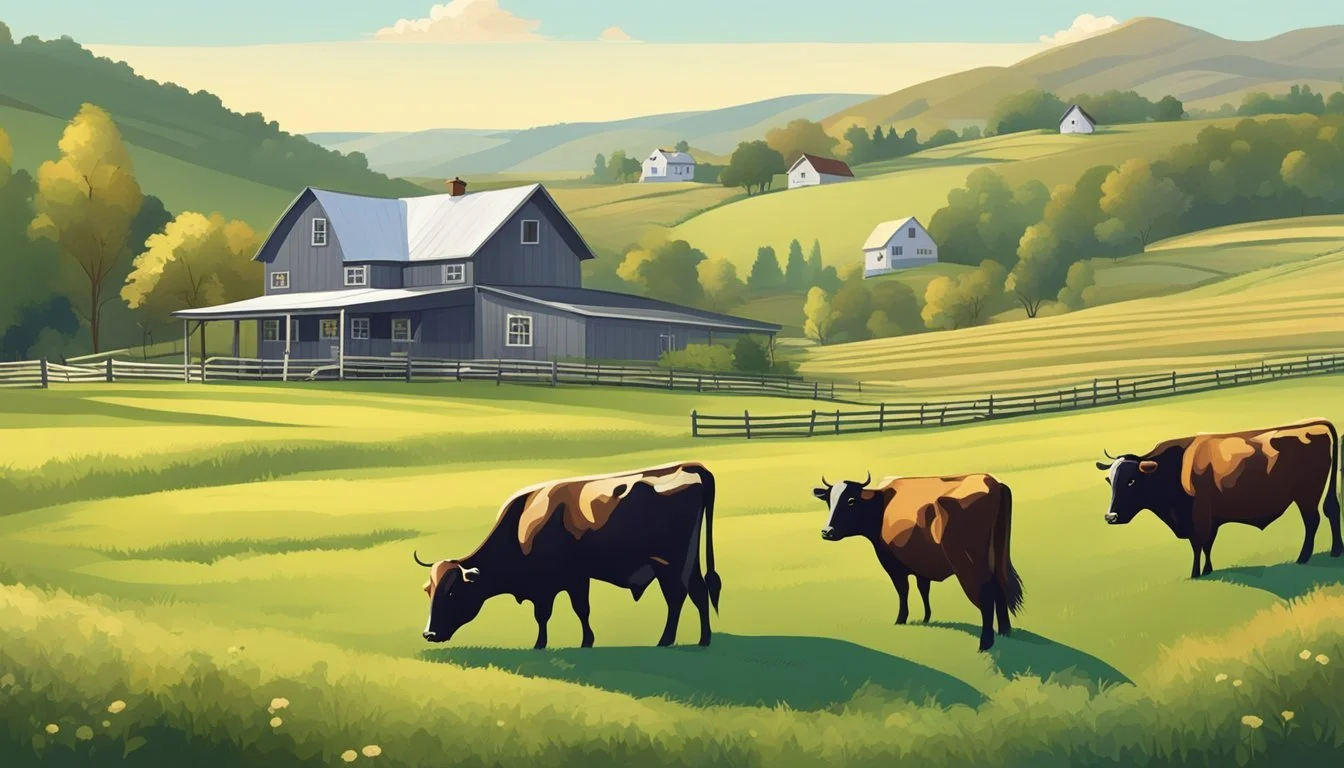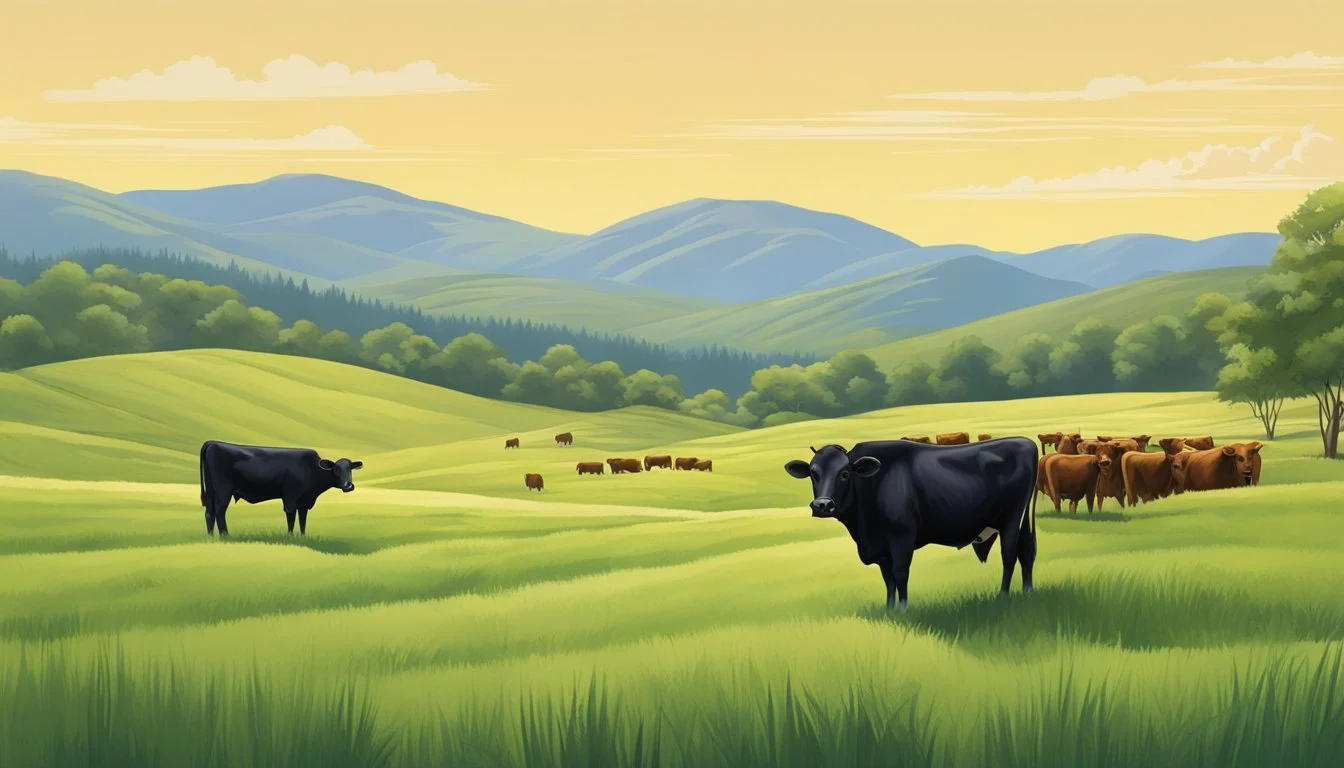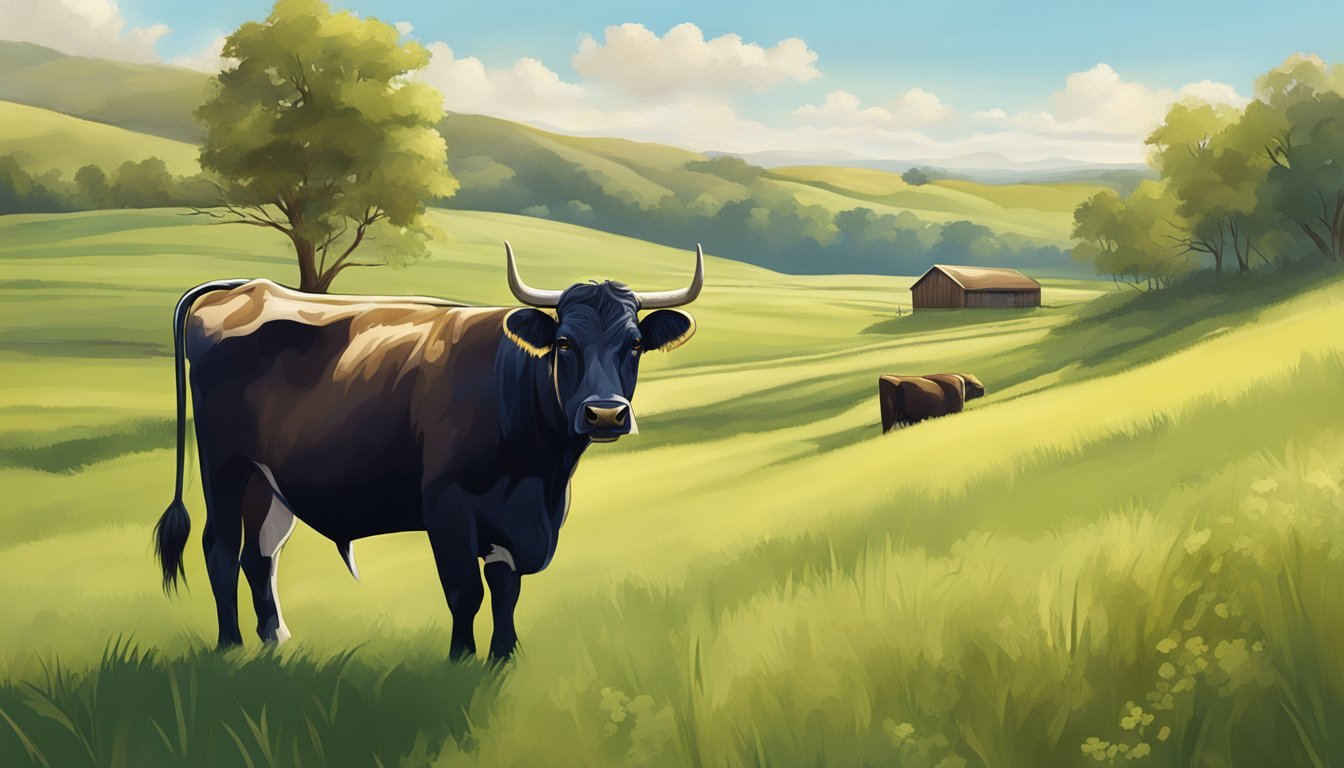Dexter Cattle as a Retirement Venture
A Guide to Low-Impact Farming for Seniors
Dexter cattle are emerging as a popular option for those considering low-impact farming in their retirement years. This breed's diminutive size and gentle demeanor make it well-suited for seniors looking for a manageable venture into agriculture. Dexter cattle require less land and can often thrive on poorer quality pasture, which translates to lower initial investments and upkeep costs—advantages that align with the financial and physical realities of many retirees.
Given their sturdy nature and adaptability, Dexter cattle are an excellent choice for conservation grazing, a farming practice that supports land management and biodiversity. Seniors can engage in this environmentally beneficial activity while also enjoying the pastoral lifestyle that comes with tending to these animals. The appeal of Dexter cattle extends beyond just their low-maintenance care; they are also efficient producers of high-quality beef—a product that's in demand among local restaurateurs and consumers, offering retirees a potential source of supplemental income.
As seniors transition to retirement, they often seek meaningful activities that foster a sense of purpose and well-being. Farming Dexter cattle meets this need by providing daily structure and the satisfaction of nurturing livestock. Additionally, the smaller stature of Dexter cattle results in easier handling, reducing the risk of injury and making the breed especially suitable for older individuals. This combination of factors positions Dexter cattle farming not just as a hobby but as a practical, fulfilling retirement venture.
Understanding Dexter Cattle
Dexter Cattle are a breed that presents a valuable opportunity for retirees interested in low-impact farming. They are known for their manageable size and hardy nature, ideal for those looking for a less physically demanding form of livestock management.
Characteristics of the Breed
Dexter Cattle originate from Ireland and are notable for their smaller stature. Adults typically stand 36-44 inches tall at the shoulder and weigh up to 750 pounds. This breed exhibits a broad body with well-rounded hindquarters, and they can have either short or long legs. Their coat color can be black, red, or dun. Originally horned, many modern Dexters are naturally polled due to selective breeding.
Physical Traits of Dexter Cattle:
Height: 36-44 inches at the shoulder
Weight: Up to 750 pounds
Body: Broad with well-rounded hindquarters
Coat Color: Black, red, or dun
Horns: Originally horned, often polled now through breeding
Advantages as Retirement Cattle
Dexters are considered low-maintenance and are well-suited for retirees. Their smaller size makes them easier to handle and requires less space, lessening the physical strain on farmers. Furthermore, Dexters are versatile in their climate adaptability and can thrive on pasture-based systems, diminishing the need for extensive feeding routines. They are known for their ability to look after themselves, which can reduce the daily workload for seniors.
Why Select Dexter Cattle for Retirement Farming:
Size: Easier handling and space efficiency
Maintenance: Low maintenance requirements
Feed: Pasture-based adaptability with potential grain supplementation
Labor: Reduced physical demands on the farmer
Genetic Selection and Animal Health
Genetic selection plays a crucial role in maintaining the health of Dexter Cattle and the prosperity of a small farm, especially for retirees who might be less able to manage larger, more intensive livestock operations. Attention to genetic quality can minimize health issues and ensure a robust herd. It's important for seniors to engage with Dexter Cattle associations and breeder networks for insights into the best practices and to acquire animals with healthy genetics.
Key Considerations for Genetic Selection:
Associations: Connect with Dexter associations for guidance
Breeders: Source cattle from reputable breeders with transparent processes
Health Management: Select for traits that contribute to overall herd health and longevity
Starting a Dexter Cattle Farm
When embarking on the journey of establishing a Dexter cattle farm, prospective retirees should consider the initial investment needed for set-up, the land and shelter requirements to maintain the herd, and the basics of herding management to ensure a sustainable venture.
Initial Set-Up and Investment
Beginning a Dexter cattle farm requires a significant but manageable investment. Retirees should calculate costs for purchasing cattle, securing land, and constructing shelters. Dexter cattle are a cost-effective breed due to their lower feed requirements and resilience, making them a practical choice for those on a fixed income.
Start-up Costs: Expenses can range widely based on location and scale but expect to cover:
Cattle purchase
Fencing
Basic farm equipment
Shelter construction
Ongoing Costs:
Feed (pasture-based and/or grain)
Veterinary care
Insurance
Farm Infrastructure: Land and Shelter
Choosing suitable land is crucial for the success of a Dexter cattle farm. An ideal setup would include ample pasture for grazing, which can reduce feed costs, and easy access to water. As for shelter, basic barns or outbuildings are sufficient to protect cattle from harsh weather.
Land Requirements:
A minimum of 2-3 acres per cow for sustainable grazing
Quality pasture land with rotational grazing potential
Shelter Needs:
A structure for protection against extreme weather
Adequate shelter to house the entire herd comfortably
Herd Management Basics
Effective herd management ensures the health and productivity of the cattle. Understanding the nutritional needs, breeding cycles, and healthcare routines are foundational to a successful cattle farm.
Healthcare & Nutrition:
Regular veterinary check-ups and vaccinations
Understanding of the ideal pasture-based diet with possible grain supplements
Breeding:
Knowledge of natural breeding practices or artificial insemination techniques
Cows typically calve for the first time at approximately 24 months
Economic Aspects
In considering Dexter Cattle as a retirement venture, seniors should evaluate the economic aspects carefully. This includes both the initial costs involved and the potential revenue streams along with an understanding of the meat and dairy market.
Costs and Potential Revenue Streams
When it comes to Dexter Cattle, seniors should note that these animals can be a relatively low-cost investment compared to larger breeds. The costs associated with Dexter cattle breeding include:
Purchase Price: Ranging from moderate to high depending on the pedigree
Feeding: Lower feed costs due to the breed's smaller size
Healthcare: Routine veterinary care and vaccinations
Housing: Minimal infrastructure required due to their adaptability
The potential revenue streams from Dexter cattle farming include:
Meat Sales: Dexter beef is lean and is considered high-quality meat; it commands a premium price in niche markets.
Dairy Production: Although not as high yielding as larger dairy breeds, Dexter cows produce milk that is rich in butterfat, making it desirable for cheese making and direct sales.
Breeding Stock: There is a market for breeding animals, particularly from high-quality bloodlines.
Agrotourism: Dexter cattle can attract visitors for farm stays and educational tours, creating an additional income stream.
Understanding the Meat and Dairy Market
Understanding the meat and dairy market is crucial for potential revenue maximization. For Dexter Cattle farming:
Meat Market: Dexter beef tends to be well-marbled and flavorful, and while the overall market for beef is vast, Dexters fit best in niche markets where consumers are willing to pay more for high-quality, pasture-raised beef.
Dairy Market: The market for dairy products from Dexter cattle is more specialized given their lower milk yields. However, their milk's high butterfat content makes it ideal for boutique cheese and dairy products which can fetch higher prices.
It is important to recognize that both beef and dairy markets are influenced by supply and demand dynamics, consumer preferences, and economic trends. Keeping abreast of market shifts and targeting the right consumer base are essential for the economic viability of Dexter cattle farming.
Sustainable Farming with Dexter Cattle
Dexter cattle offer an efficient way for senior farmers to engage in sustainable agriculture that benefits the environment. They are a favorable choice for low-impact farming practices, contributing positively to soil health and biodiversity.
Role in Environmental Sustainability
Dexter cattle, a smaller-sized breed, are known for their minimal environmental footprint. They require less land and water compared to larger cattle breeds, making them particularly suitable for sustainable farming ventures. By necessitating fewer resources, Dexter cattle not only lower operating costs for seniors but also correspond with the principles of environmental sustainability. Their capability to thrive on marginal pasture lands contributes to preserving grassland ecosystems and preventing overgrazing.
Low-Impact Practices and Biodiversity
In the context of sustainable farming, Dexter cattle promote biodiversity both directly and indirectly. Here are some specific ways in which they contribute:
Feed Consumption: Dexter cattle adapt well to diverse types of forage, minimizing the need for concentrated feeds and promoting natural growth patterns of native flora.
Pasture Management: Their grazing habits help maintain diverse pasture ecosystems, which in turn provide habitats for a variety of wildlife species.
Through these low-impact practices, Dexter cattle support a range of plant and animal life which is key to maintaining ecological balance and fostering biodiversity.
Manure Management and Soil Health
A critical facet of sustainable agriculture is efficient manure management, and Dexter cattle manure is an excellent source of nutrients for crops, enhancing soil fertility and structure. The appropriate management of manure contributes to:
Increasing Soil Carbon: Manure from Dexter cattle can be used to enrich the soil, increasing its carbon content and aiding carbon sequestration.
Improving Soil Health: Regularly distributed manure improves soil texture and water retention capabilities, leading to healthier crop yields.
This way, Dexter cattle not only help in nutrient cycling but also play a significant role in cultivating soil health, proving advantageous for sustainable farming models pursued by seniors.
Ecosystem and Climate Considerations
In the context of Dexter cattle as a retirement venture, it is important to assess how this small-scale farming practice aligns with broader ecological challenges and climate goals. Seniors engaging in low-impact farming can play a significant role in promoting sustainable agriculture and mitigating environmental issues.
Greenhouse Gas Emissions and Climate Change
Dexter cattle, due to their smaller size, inherently have a smaller carbon footprint compared to larger breeds. Greenhouse gas emissions—specifically methane produced by cattle—are a considerable contributor to climate change. Efforts to minimize emissions include dietary adjustments and managed grazing techniques that can lead to reduced methane production per animal.
Carbon Sequestration Practices
Implementing carbon sequestration strategies is vital for offsetting greenhouse gas emissions in cattle farming. Practices such as rotational grazing enhance soil health and increase its carbon storage capacity. The presence of Dexters in rewilding projects indicates their role in maintaining biodiversity and supporting ecosystems that are resilient to climate change.
Adapting to Changing Environmental Policies
As environmental policies evolve, Dexter cattle farmers must stay informed and adapt to regulations aimed at reducing ecological impact. Sustainable farming certifications can aid farmers in aligning with best practices and benefit from potential incentives for environmentally friendly farming methods.
Animal Care and Welfare
Dexter cattle are an exceptional breed for seniors engaging in low-impact farming due to their manageable size and temperament. Ensuring their welfare involves a comprehensive routine of care, attention to breeding practices, and adherence to ethical standards.
Daily Routines and Veterinary Care
The daily well-being of Dexter cattle hinges on regular feeding, clean water access, and maintenance of clean living conditions. Adequate shelter should be provided to protect them from the elements. It is crucial to establish a relationship with a veterinarian who can perform regular health checks and provide vaccinations and treatments as needed. Preventive care, including hoof trimming and parasite control, is essential in preserving their health and preventing common livestock ailments.
Sample Routine:
Morning:
Check: Overall cattle health and behavior
Provide: Fresh water and a balanced diet
Evening:
Inspect: Living conditions for cleanliness
Secure: Shelter for night protection
Breeding and Pedigree Concerns
In breeding Dexter cattle, maintaining a comprehensive pedigree is vital to ensure the genetic health and viability of the herd. It is essential for seniors to keep detailed records of lineage to avoid inbreeding and to preserve the desirable traits of the Dexter breed. Responsible breeding practices involve selecting appropriate mates and may require consultation with cattle breeding experts or associations.
Considerations for Breeding:
Genetic Health: Avoid hereditary problems by understanding pedigrees
Breeding Selection: Choose mates based on temperance, size, and conformation
Ethical Considerations and Animal Welfare
Seniors farming with the welfare of Dexter cattle in mind must create an environment that enables the cows to express their natural behaviors, such as grazing and social interaction. Ensuring animal welfare involves more than just meeting physical needs—it encompasses providing mental stimulation and a stress-free environment.
Key Welfare Aspects:
Freedom from Hunger and Thirst: By providing ready access to fresh water and a diet to maintain health and vigor
Freedom to Express Normal Behavior: By providing sufficient space, proper facilities, and company of the animal’s own kind
Freedom from Discomfort: By providing an appropriate environment including shelter and a comfortable resting area
By following these practices, seniors can enjoy a fulfilling retirement venture that prioritizes the care and welfare of their Dexter cattle.
Marketing and Consumer Trends
In the niche market of Dexter cattle, two factors have become pivotal: the shifts in consumer demand towards specific dietary needs and the call for greater transparency in production processes.
Consumer Demand and Diet Shifts
Consumer trends have indicated a growing interest in specialized diets that emphasize quality protein sources with a lower environmental impact. Dexter cattle, known for their smaller size, fit neatly into this category as they produce less greenhouse gases per animal compared to larger beef breeds. This has made them particularly appealing to environmentally conscious consumers who are looking for sustainable sources of protein. Consumers are increasingly opting for meat products that are aligned with their dietary preferences, which include grass-fed, organic, and lean protein options.
Labeling and Transparency in Production
The emphasis on transparency in food sourcing has led to a higher demand for clear and honest labeling. Consumers today want to know the origin of their food, its environmental footprint, and the welfare of the animals involved. Dexter cattle farmers can differentiate their products in the market by providing detailed labels that offer information such as:
Grass-fed Certification: Assurance that animals are raised on a natural diet.
Organic Status: Indicates the absence of synthetic fertilizers and pesticides.
Carbon Footprint: Details on the environmental impact of the production process.
Labels play a crucial role in informing consumers and building trust, positioning Dexter cattle products as a choice for those who value ethical and sustainable farming practices.
Looking Ahead: The Future of Farming
The future of farming hinges on adapting to change, leveraging technology, and enhancing food security. Dexter cattle play a role in this landscape as a suitable option for senior farmers looking for a low-impact farming venture.
Predictions for 2050 and Beyond
As the world looks towards 2050, the agricultural sector anticipates significant demographic shifts with an aging population. The demand for sustainable and manageable farming practices is expected to increase. Dexter cattle, known for their ease of handling and smaller size, are poised to meet these needs. They are an ideal livestock breed for senior farmers who may find the physical demands of larger breeds too challenging. Predictive models suggest that these cattle will continue to gain popularity among small-scale farms and in conservation and rewilding projects.
Integrating Innovation and Technology
Farming practices will increasingly incorporate technology to improve efficiency and yield. For Dexter cattle farmers, this may include:
Precision farming: Utilizing sensors and GPS technology to optimize pasture usage and monitor animal health.
Data analytics: Improving breeding strategies and herd management through the collection and analysis of data.
Robotic systems: Assisting with milking and feeding, reducing the labor intensity of cattle farming.
Innovation in Dexter cattle farming comes with a dual promise: it can simplify the workload for retiring farmers while ensuring high-quality milk and beef production.
Global Food Security and Dexter Cattle
In the pursuit of global food security, Dexter cattle have an advantageous role. Their minimal resource requirements and ability to thrive in a variety of climates make them a strategic choice for food production in diverse environments. Moreover, the breed's hardiness translates to fewer veterinary needs and lower maintenance costs.
As populations grow and demand on food production systems intensifies, Dexter cattle offer a sustainable option to bolster supply while maintaining ecological balance. By farming Dexter cattle, senior farmers can contribute to a secure food future while engaging in a low-impact, rewarding agricultural practice.

